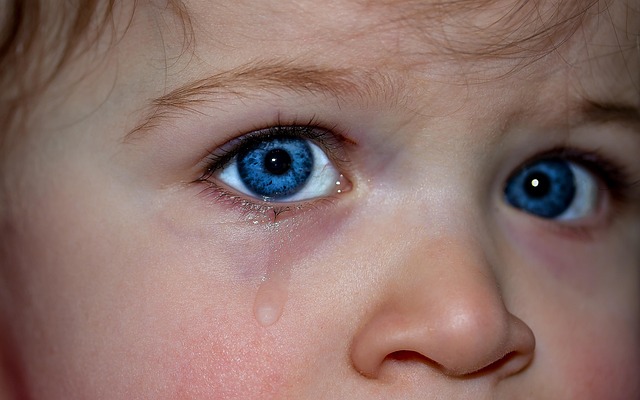Child safety encompasses both offline and online threats, requiring proactive measures from parents and caregivers. Key strategies include developing family safety plans, fostering open communication, teaching age-appropriate safety tips, and educating children about personal boundaries in the digital realm. Child protection laws vary regionally but universally emphasize adult responsibility for child security. Safety education should cover hazard recognition, online behavior guidelines, consent, and trusting instincts to prevent child abuse and child injuries. By combining family planning with community resources, we create safe havens that empower children to navigate the world securely, minimizing risks from both physical and virtual hazards.
Teaching children personal safety and awareness skills is paramount in today’s complex world. From understanding potential hazards in their physical surroundings to navigating the digital realm, equipping kids with these vital skills can prevent harm and foster a sense of security. This article offers comprehensive guidance on: understanding child safety risks, establishing personal boundaries, protecting online interactions, creating safe family environments, and utilizing community resources, all essential in ensuring child abuse prevention and enhancing overall well-being.
Understanding Child Safety: An Overview of Potential Hazards
Understanding Child Safety involves recognizing a wide array of potential hazards that can put children at risk. From physical dangers in their surroundings to online threats, it’s crucial to equip kids with essential skills for personal safety and awareness. Child abuse prevention starts with parents and caregivers who are vigilant about protecting children from harm. This includes implementing family safety plans, fostering open communication, and teaching basic child safety tips tailored to their age group.
Online safety for kids is another critical aspect often overlooked. With technology playing a significant role in modern life, it’s essential to educate children about digital risks, such as sharing personal information and interacting with strangers online. Child protection laws vary across regions but generally emphasize the responsibility of adults to ensure child security at all times. Safety education for children should also encompass preventing child injuries by teaching them to recognize and avoid potential hazards in their daily environments.
Teaching Children About Personal Boundaries and Trust
Teaching children about personal boundaries and trust is a vital component of their overall safety education. It empowers them to recognize and respect their own limits, fostering a sense of self-worth and autonomy. By teaching them that their bodies belong to them and they have the right to say ‘no’ to uncomfortable or inappropriate touch, we equip them with powerful tools for protection against potential abuse. This includes both physical and online safety, as children need to understand boundaries in real life and digital spaces alike.
Parents and caregivers play a crucial role in modeling and reinforcing these concepts daily. Open conversations about consent, personal space, and trusting their instincts create a safe environment where children feel comfortable discussing sensitive topics. Regularly reviewing family safety plans and exploring online safety for kids through age-appropriate discussions and resources further strengthens their understanding of protecting themselves from harm. Child protection laws and the implementation of safety education in schools also contribute to creating a culture where every child is valued, respected, and safe.
Digital World Awareness: Protecting Kids Online
In today’s digital era, it’s crucial to equip children with child safety tips that extend beyond the physical realm. Online safety for kids has become a vital aspect of protecting children from harm. As they navigate the vast and often uncharted territory of the internet, children need guidance on how to recognize potential dangers, such as online predators and malicious content. Implementing child protection laws and establishing clear family safety plans are essential steps in fostering a safe digital environment.
Teaching children about responsible online behavior, including privacy settings and the importance of not sharing personal information, is crucial. Parents and caregivers play a pivotal role in guiding kids to understand the consequences of their actions online and how to protect themselves from child abuse prevention attempts. Safety education for children should also involve discussing appropriate online interactions and the potential risks associated with accepting friend requests or engaging with strangers. By doing so, we can ensure that children are not only protected from physical harm but also develop the skills needed to navigate the digital world securely.
Creating a Safe Haven: Family Planning and Community Resources
Creating a Safe Haven: Family Planning and Community Resources
Teaching children personal safety and awareness skills begins at home with robust family planning. Parents and caregivers play a pivotal role in establishing safe environments by implementing clear rules, boundaries, and consistent discipline. Regular open conversations about potential dangers—from strangers to online threats—are essential, ensuring kids understand the importance of trust and discretion. Incorporate child safety tips like teaching them their full name, address, and phone number, as well as basic first aid and CPR techniques.
Beyond the family unit, community resources significantly contribute to protecting children from harm. Familiarize yourself with local child protection laws and report any suspected child abuse or neglect immediately. Schools, community centers, and online safety organizations offer valuable programs aimed at fostering safe environments through education and awareness. Engaging in these initiatives ensures that children receive comprehensive safety education, empowering them to recognize and avoid potential dangers while instilling a culture of security within the broader community.
Teaching children personal safety and awareness skills is a multifaceted process that requires both parents and communities to come together. By understanding potential hazards, establishing clear boundaries, navigating the digital world responsibly, and creating safe havens at home, we can empower kids with the knowledge and tools needed to protect themselves from harm. Implementing these child safety tips, adhering to child protection laws, and fostering a culture of safety can significantly reduce risks and contribute to the overall well-being of our youngest members.
